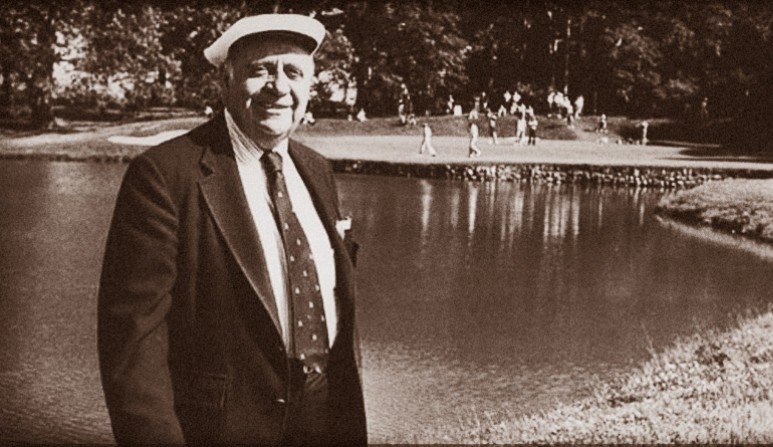 When the review copy of A Difficult Par arrived, my first reaction was, Uh-oh. Subtitled Robert Trent Jones Sr. and the Making of Modern Golf, the fear was that at nearly 500 pages, the tome would prove the literary equivalent of a dozen fellow golf architecture geeks with an open bar tab debating shot values and the best par 3s in the world.
When the review copy of A Difficult Par arrived, my first reaction was, Uh-oh. Subtitled Robert Trent Jones Sr. and the Making of Modern Golf, the fear was that at nearly 500 pages, the tome would prove the literary equivalent of a dozen fellow golf architecture geeks with an open bar tab debating shot values and the best par 3s in the world.
Not to worry. As told by James R. Hansen, a history professor at Auburn and authorized biographer of astronaut Neil Armstrong, A Difficult Par works on multiple levels. As Hansen pointed out in a post-publication phone interview, it’s a classic “American story.”
The son of working-class immigrants from England’s Welsh Borderlands moves with his family to upstate New York and parlays his passion – in this case for golf – into a singularly distinguished career. In the process, he effectively invents an academic discipline and a profession — golf course architecture – while demonstrating his worth to the aristocratic family of the woman he would marry.
For golf architecture aficionados, Hansen’s incredibly thorough-going research does a great job of connecting the dots that collectively form both the way courses came to be designed and even how the game is played, his layouts having hosted 79 national championships, among other major tournaments.
A Difficult Par also functions as basic social history – think Seabiscuit for readers only marginally interested in horse racing – as Jones navigates the vicissitudes of the Depression, building booms, and the eventual decline in prominence of his design esthetic. (The book’s title refers to his mantra that every hole should be “a difficult par but an easy bogey.”)
For this reviewer, the most refreshing aspect of A Difficult Par is its resistance to hagiography — a rarity in the annals of golf literature. Jones was sometimes an unscrupulous businessman, forming shell companies to do contracting work while concealing the misrepresentation from clients, for example.
The never-ending conflict between Jones’s sons, Robert, Jr. and Rees, famous golf architects in their own right, turns out to be no more intriguing than your run-of-the-mill family feud. The son’s creative faculties notwithstanding, the resentments will seem petty to all but the principals involved.
(Hansen’s agreement with family members, including the sons, was that they were allowed to read his initial draft of the book and make suggestions, with the understanding that Hansen was the final arbiter of content.)
As dynamic a professional as Jones was, and as iconic as many of his 400-plus projects remain, one also sees in the body of his work the roots of many of golf’s current problems: Seven-figure design fees and huge construction and maintenance budgets, making the game unaffordable to many; courses that even the most accomplished players deem “just too hard.”
(Ironically, Hansen points out, two of the major high points in Jones’s back-and-forth rags-to-riches tale consist of surges in public works commissions, first during the Depression and later thanks to the multi-course Alabama Golf Trail.)
Although the sheer volume of design work and Hansen’s meticulous eye for detail justify the comprehensive treatment, A Difficult Par may ultimately include more about the subject than all but the already devout may care to know. But the text is sprinkled with vintage photos and design drawings, and even the typography – something I probably wouldn’t have noticed back in the day – is easy on the eye.
Considering the mass of material, in other words, it’s a page-turner.
# # #

